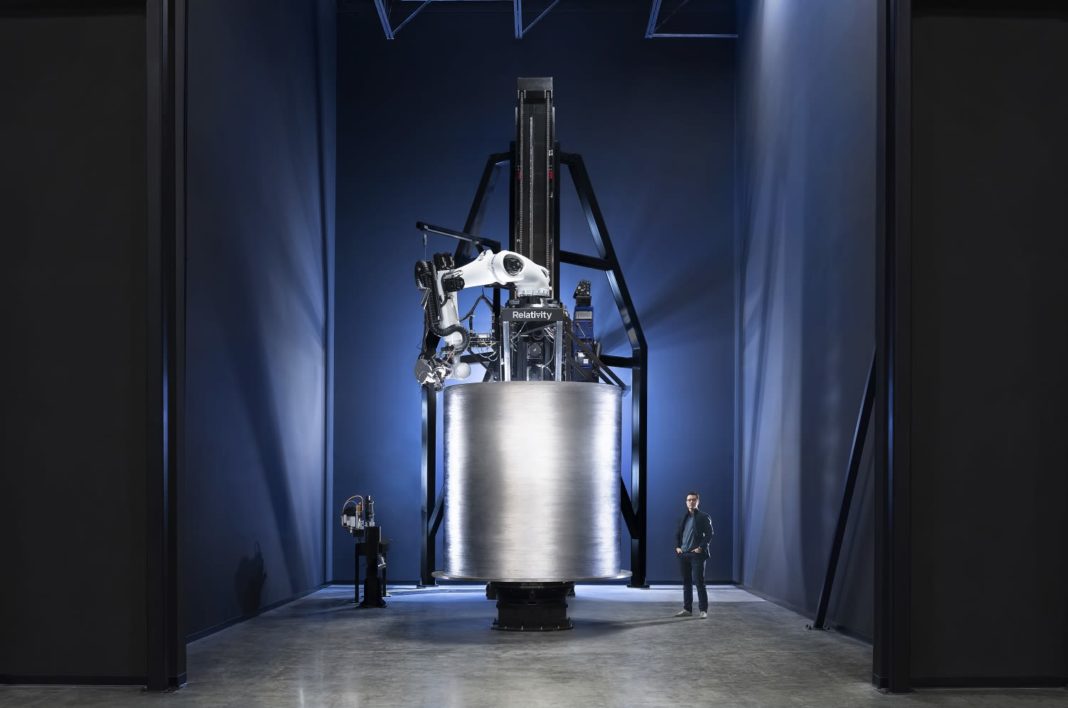Commercialized space travel is becoming a reality thanks to more affordable 3D-printed rocket components.
Commercialized space travel is no longer the preserve of science fiction — but that doesn’t mean it’s cheap. The average NASA space launch costs $81 million per seat — or $450 million total — to send astronauts to the International Space Station (ISS). Making space travel scalable by cutting costs is paramount. One potential solution to this problem is 3D printing.
3D Printers & Rockets: Synergy In Space
Space Shuttles are complicated to build. For example, fabricating a shear-coaxial injector — a rocket part that injects streams of fuel into an engine’s thrust chamber — can take two years.
Instead, 3D printers can create real-world copies of 3D models by using multiple layers of material to create them, reducing the amount of money and time spent on creating space ship components.
The first 3D-printed rocket components were used in 2014 by SpaceX. The company created several 3D components for the SuperDraco thruster engine and in the Falcon 9 rocket launch to cut launch costs.
In the same year, NASA used a 3D printer to create the first objects in space, including a 3D-printed wrench. NASA has run trials on the efficacy of 3D printers in space and has found that microgravity has no significant impact on the parts, paving the way for wider use.
3D printers continue to grow in importance. In 2017, the first 3D-printed satellite, called TuPOD, was launched from the International Space Station. The TuPOD — created in a partnership between CRP USA, Teton Aerospace, Morehead State University, and JAXA — was a deployment vehicle for several smaller satellites.
In 2021, the first 3D-printed components landed on an alien world: the Mars Perseverance Rover contained 11 3D-printed metal components including heat exchangers made from a nickel alloy.
Lessons From Commercial Space Programs
Companies like SpaceX, keen to outpace competitors, will need innovative ways to lower the overall price of space travel. 3D printing provides an easy way to cut manufacturing costs of spacecraft components with minimal engineering costs.
The Agnilet Engine
In February 2021, Indian start-up Agnikul Cosmos became the first company to successfully test a 3D-printed rocket engine called Agnilet. It takes just four days to build the engine and it can carry 100 KG of supplies into low earth orbit.
Terran 1
An American company, Relativity Space, is developing a launch vehicle designed for deployment and resupply of satellites. The system takes under 60 days to build and uses just 730 individual components compared to traditional rockets which require more than 60,000 components to operate.
These examples are important for two reasons:
- 3D printing allows companies to be more flexible in when and how they launch their rockets since lead time to production is lower.
- Far fewer things can go wrong which makes testing rockets far easier than it was in the past.
3D-Printed Components Are Just The Beginning
While 3D-printed rocket components are exciting, they are probably the least important use for 3D printing in space. One of the biggest challenges for long-distance space missions is equipment and spare parts. NASA and other space agencies are already attempting to resolve these problems ahead of a potential manned journey to Mars.
Resupplying Spare Parts
The ISS, which has been flying for more than 20 years, has never gone more than 120 days without a resupply. The journey to Mars takes around 7 months. On the ISS, it is normal for astronauts to replace equipment rather than attempt to repair an individual damaged component.
Bespoke Equipment vs. Caches
Aside from carrying spare parts, a Mars mission also needs equipment on the ground, but carrying all of it isn’t viable. One high-risk solution is to dock with supply caches flown out in advance. But, if something goes wrong with the caches, the team may not be able to return to Earth.
3D printing offers a potential solution for parts and equipment. Instead of carrying assembled equipment — some of which they may never need — astronauts could create equipment onsite. It would only be necessary to bring the necessary raw material.
The ISS Is Already Using 3D Printing
ISS astronauts are already able to create 3D-printed components up to 6-inches square with the Additive Manufacturing Facility.
Also, the ReFabricator unit, sent to the ISS in 2019, enables astronauts to reuse damaged parts by feeding them into the device to create raw material for future printing. A future Mars mission team could use the same process to recycle damaged components into new ones.
Making Space Travel More Viable
Science does not operate in a vacuum and 3D printing is opening up significant opportunities for space travel. By building more affordable rockets. For example, it will become easier to deploy satellites and conduct missions in low Earth orbit.
However, the biggest advantage will be the ability to create spare parts and mission-critical components on the fly without ferrying them on the ship.
Reducing the amount of planning required to make a mission safe will enable astronauts to better react to challenges and improve long-term mission outcomes.
Featured image: Relativity Space – Remember, you can post job opportunities in the AM Industry on 3D ADEPT Media free of charge or look for a job via our job board. Make sure to follow us on our social networks and subscribe to our weekly newsletter : Facebook, Twitter, LinkedIn & Instagram ! If you want to be featured in the next issue of our digital magazine or if you hear a story that needs to be heard, make sure to send it to contact@3dadept.com






